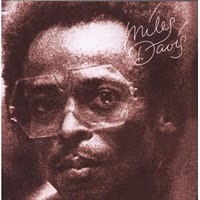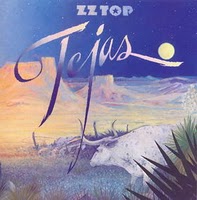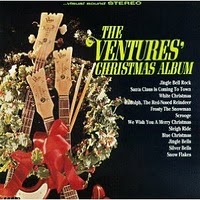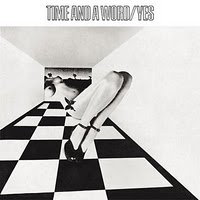Even though early rock and roll was deeply rooted in country music, the two were ideologically at odds from the start. This rift became more pronounced as the ’50s gave way to the ’60s, and by 1965 Nashville was more provincial than ever, seemingly impervious to the supernovas of musical activity in cities like London and LA. Nevertheless, rumblings of a sea change can be heard during this time period even in the music of Rock’s prime movers, the Beatles’ “Run For Your Life” on Rubber Soul just one example.
In 1966, less than a year after he had almost been booed offstage for playing an electric guitar at the Newport Folk Festival, Bob Dylan would travel to Nashville to cut a little record called Blonde On Blonde. Similarly, even on their early albums the Byrds and Buffalo Springfield wore their country influences on their sleeves, this mark of distinction becoming even more pronounced with each release. Something needed to give, and give it eventually did in the summer of 1968. Embracing traditional country & western (some argue to a fault), the Byrd’s landmark LP Sweetheart of the Rodeo announced the arrival of a new aesthetic. Released the following spring, Bob Dylan’s downhome Nashville Skyline upped the ante even more.
These records confused both the squares and the hippies when they came out, but not as much as when Gram Parsons and Chris Hillman defected from the Byrds to form the Flying Burrito Brothers. Parsons, most largely responsible for the Byrd’s dramatic switch to Country purism on “Sweetheart…”, needed a broader sonic canvas to explore his “Cosmic American Music”, and he would do just that on 1969′s The Gilded Palace of Sin. Its cover, depicting the long-haired Parsons in a marijuana leaf-patterned rhinestone suit, conveyed its mission statement almost as much as the music within. Unlike the Byrds’ and Dylan’s albums, The Gilded Palace of Sin took pieces from country and rock and reassembled them into something truly unique. Of the three releases in this “Country Rock Holy Trinity”, the Burrito’s album sold the most poorly, but its long-term impact exceeded that of its counterparts. Immediately after its release, musicians of all stripes took notice, and decades later the alt. country movement would be born when bands such as Uncle Tupelo and the Jayhawks returned to this well with a similar M.O. But the few years between the late ’60s and early ’70s represent what can only be called Country Rock’s Golden Age. Below are some more highlights:
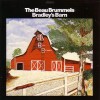 1. Bradley’s Barn Beau Brummels (1968) This release by undervalued San Francisco folk rockers, which arrived in stores just a few short weeks after Sweetheart of the Rodeo, is in some ways more successful than its competition. Much of this can be attributed to Sal Valentino’s gritty vocals and the impeccable picking of some ace Nashville sessioneers.
1. Bradley’s Barn Beau Brummels (1968) This release by undervalued San Francisco folk rockers, which arrived in stores just a few short weeks after Sweetheart of the Rodeo, is in some ways more successful than its competition. Much of this can be attributed to Sal Valentino’s gritty vocals and the impeccable picking of some ace Nashville sessioneers.
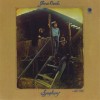 2. Goose Creek Symphony Established 1970 (1970) On their debut album, this Arizona outfit conveys a laid-back and goofy stoner vibe, which somewhat belies its virtuosic musicianship. Its side two opener, “Talk About Goose Creek and Other Important Places”, is one of country rock’s great psychedelic rave-ups.
2. Goose Creek Symphony Established 1970 (1970) On their debut album, this Arizona outfit conveys a laid-back and goofy stoner vibe, which somewhat belies its virtuosic musicianship. Its side two opener, “Talk About Goose Creek and Other Important Places”, is one of country rock’s great psychedelic rave-ups.
 3. Grateful Dead American Beauty (1970) Which Grateful Dead album most typifies country rock is open to debate; clearly, it’s a toss-up between Workingman’s Dead and their next album, American Beauty. But in the end the latter achieves this distinction, if only by a slim margin. Featuring Jerry Garcia’s sparkling pedal steel guitar and some of the band’s best ever harmonies, the Dead would never sound this great in the studio again.
3. Grateful Dead American Beauty (1970) Which Grateful Dead album most typifies country rock is open to debate; clearly, it’s a toss-up between Workingman’s Dead and their next album, American Beauty. But in the end the latter achieves this distinction, if only by a slim margin. Featuring Jerry Garcia’s sparkling pedal steel guitar and some of the band’s best ever harmonies, the Dead would never sound this great in the studio again.
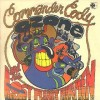 4. Commander Cody and His Lost Planet Airmen Lost in the Ozone (1971) Looking back almost as much as it looked forward, this raucous album introduced elements of rockabilly and boogie-woogie into the country rock mix. Commander Cody would record some more great albums, but this remains his definitive statement.
4. Commander Cody and His Lost Planet Airmen Lost in the Ozone (1971) Looking back almost as much as it looked forward, this raucous album introduced elements of rockabilly and boogie-woogie into the country rock mix. Commander Cody would record some more great albums, but this remains his definitive statement.
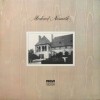 5. Michael Nesmith And the Hits Just Keep on Comin’ (1972) The Monkees’ hippest member recorded some of the best music in the country rock canon. But this minimalist outing, which features a rendition of “Different Drum” that’s superior to Linda Ronstadt’s version, is a true standout.
5. Michael Nesmith And the Hits Just Keep on Comin’ (1972) The Monkees’ hippest member recorded some of the best music in the country rock canon. But this minimalist outing, which features a rendition of “Different Drum” that’s superior to Linda Ronstadt’s version, is a true standout.
Further listening: Across the pond, Americana made its mark in 60′s Britain as well. For an idea of what what Country sounds like when it’s melded with Yardbirdsy blues, check out The Country Sect by The Downliners Sect; its 1965 release date makes it a record that was truly ahead of its time. Ray Davies was also taking notes when it came to Country, and his obsessions with it are most successfully explored on the Kinks’ last great album, 1971′s Muswell Hillbillies. Brinsley Schwarz, a band that counted Nick Lowe as an original member, were major underachievers in their day, but their take on country would come to define another genre, pub rock. Their second LP, Despite it All, is a small masterpiece. – Richard P
Are we forgetting anyone? We’d love to hear your comments:
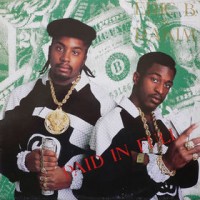


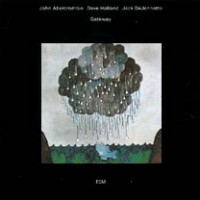
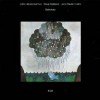 1. Gateway Gateway (1975) Guitar trio set featuring John Abercrombie on guitar, the great Jack DeJohnette behind the drums, and Dave Holland on bass. This record covers everything from post-bop swing to abstract, sonic explorations. This is a criminally underrated guitar trio record, if not one of the best releases from ECM.
1. Gateway Gateway (1975) Guitar trio set featuring John Abercrombie on guitar, the great Jack DeJohnette behind the drums, and Dave Holland on bass. This record covers everything from post-bop swing to abstract, sonic explorations. This is a criminally underrated guitar trio record, if not one of the best releases from ECM.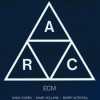 2. Chick Corea , Dave Holland, Barry Altschul ARC (1971) Chick Corea on piano with Dave Holland on bass and Barry Altschul on percussion – Any fans of the classic piano trio should study this record, both lyrical and dissonant; it bridges the gap between free improv and structure.
2. Chick Corea , Dave Holland, Barry Altschul ARC (1971) Chick Corea on piano with Dave Holland on bass and Barry Altschul on percussion – Any fans of the classic piano trio should study this record, both lyrical and dissonant; it bridges the gap between free improv and structure.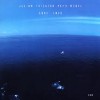 3. Julian Priester Love, Love (1973) An “electrocoustic” jazz/ funk session with tight horn arrangements, wah guitars, low-fi bass lines and eerie synth swells mingled with Latin flavored piano runs. This is a modern sounding, progressive record that still sounds fresh today-a Jive Time favorite.
3. Julian Priester Love, Love (1973) An “electrocoustic” jazz/ funk session with tight horn arrangements, wah guitars, low-fi bass lines and eerie synth swells mingled with Latin flavored piano runs. This is a modern sounding, progressive record that still sounds fresh today-a Jive Time favorite.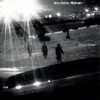 4. Nils Petter Molvær Solid Ether (2000) This is trumpet player Nils Petter Molvær’s second release by this project ; a stew of trumpet swirls, loops, guitars, and various electronics with programmed beats intertwined with live drums, along with gentle female vocal interludes. There’s also some sampling from DJ Strangefruit .
4. Nils Petter Molvær Solid Ether (2000) This is trumpet player Nils Petter Molvær’s second release by this project ; a stew of trumpet swirls, loops, guitars, and various electronics with programmed beats intertwined with live drums, along with gentle female vocal interludes. There’s also some sampling from DJ Strangefruit .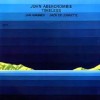 5. John Abercrombie Timeless (1975) Another trio record featuring John Abercrombie and Jack DeJohnette, only this time Jan Hammer on keyboards joins the fold. I had to include this spaced out fusion masterpiece. Frenetic drumming and fuzzed out guitar and organ washes create psychedelic soundscapes with funky breaks alongside tender acoustic guitar/piano duets. No Miami Vice theme here.
5. John Abercrombie Timeless (1975) Another trio record featuring John Abercrombie and Jack DeJohnette, only this time Jan Hammer on keyboards joins the fold. I had to include this spaced out fusion masterpiece. Frenetic drumming and fuzzed out guitar and organ washes create psychedelic soundscapes with funky breaks alongside tender acoustic guitar/piano duets. No Miami Vice theme here.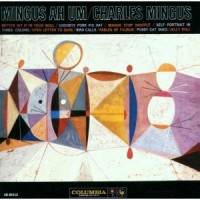
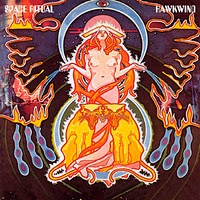 Rock made interstellar matter. A blessed stars collision makes possible this weird, antisocial record. A quite rancid and demodé spot that doesn’t resemble anything done before or after. A crash between the cave-like distortion and the outer space, mystic sounds. A search for God based on primitive rites. Pagans worshipping Nature, Fire, Elements, Cosmos. Ancient divinities, entities such as Sun Ra or Blue Cheer. A true astral projection, an initiation turn down to the depths of the Earth and up to the confines of the Universe. Excessive, saturated, vehement, foul and whimsical. At the antipodes of simplicity. And yet, it sounds basic and direct. A gloomy journey towards light. Guitars buried deep down in the mix, foregrounded bass and vocals and some occasional trumpets sounding like distant low-frequency signals. I’ve never found anything like this. An artificial album. A touched-up live which is a pure celebration of experience. It’s both YES and NO. An endless curl.
Rock made interstellar matter. A blessed stars collision makes possible this weird, antisocial record. A quite rancid and demodé spot that doesn’t resemble anything done before or after. A crash between the cave-like distortion and the outer space, mystic sounds. A search for God based on primitive rites. Pagans worshipping Nature, Fire, Elements, Cosmos. Ancient divinities, entities such as Sun Ra or Blue Cheer. A true astral projection, an initiation turn down to the depths of the Earth and up to the confines of the Universe. Excessive, saturated, vehement, foul and whimsical. At the antipodes of simplicity. And yet, it sounds basic and direct. A gloomy journey towards light. Guitars buried deep down in the mix, foregrounded bass and vocals and some occasional trumpets sounding like distant low-frequency signals. I’ve never found anything like this. An artificial album. A touched-up live which is a pure celebration of experience. It’s both YES and NO. An endless curl. 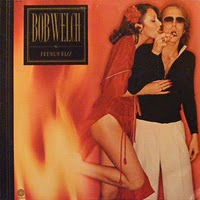 Following a brief affair with heavy rock on the pair of Paris releases, Bob Welch puckers up and lands a solo soft rock triumph on French Kiss. While some of that guitar crunch remains, it and Welch’s trademark baked goods vocals are wrapped in silky disco strings and dance floor beats throughout the mesmerizing French Kiss. The LP finds Welch as a post-hippie playboy on the prowl through irrepressible entries like the alluring “Ebony Eyes,” “Hot Love, Cold World,” and the Fleetwood/McVie/Buckingham assisted infatuation of “Easy to Fall” and “Sentimental Lady,” originally cut for the Mac’s Bare Trees. Elsewhere the disco-rockin’ “Carolene,” funky “Outskirts,” vintage Welch space-drifter “Danchiva” and sunny Claifornia dreamin’ duo of “Lose my Heart” and “Lose Your Heart” only serve to solidify the album’s appeal – rare is the seventies softie that never dips in quality, all while delivering the lounge lizard magic in such spot-on fashion as on French Kiss. –Ben
Following a brief affair with heavy rock on the pair of Paris releases, Bob Welch puckers up and lands a solo soft rock triumph on French Kiss. While some of that guitar crunch remains, it and Welch’s trademark baked goods vocals are wrapped in silky disco strings and dance floor beats throughout the mesmerizing French Kiss. The LP finds Welch as a post-hippie playboy on the prowl through irrepressible entries like the alluring “Ebony Eyes,” “Hot Love, Cold World,” and the Fleetwood/McVie/Buckingham assisted infatuation of “Easy to Fall” and “Sentimental Lady,” originally cut for the Mac’s Bare Trees. Elsewhere the disco-rockin’ “Carolene,” funky “Outskirts,” vintage Welch space-drifter “Danchiva” and sunny Claifornia dreamin’ duo of “Lose my Heart” and “Lose Your Heart” only serve to solidify the album’s appeal – rare is the seventies softie that never dips in quality, all while delivering the lounge lizard magic in such spot-on fashion as on French Kiss. –Ben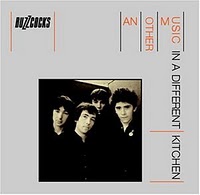 There are some albums which will never age and remain relevant no matter what the prevailing musical trends; Another Music In A Different Kitchen is one such album. Many predicted the demise of the band following the departure of founder member Howard DeVoto but this magnificent album proved the doom-mongers wrong. The Buzzcocks’ magnum opus is not punk but brash rock and roll with pop overtones couched in the candid language of the day. It carries no pretensions and refuses to acknowledge any inspirational influences. This is simply four blokes having a good time. From the buzz-saw introduction of early single “Boredom” which both opens and closes the album but doesn’t actually appear in its entirety, this is a quite breathtaking selection of songs but, in my opinion, side two is where all the nuggets are to be found. The brilliant jagged guitar that ranges throughout “Fiction Romance”, the driving bass/guitar that punctuates the chorus of “Autonomy”, the desperate, manic vocals which feature on “I Need” and the devastating drumming which rolls through “Moving Along With The Pulsebeat” and is one of the few occasions a drum solo can claim to be more than window dressing – all important considerations when understanding what makes this type of music so powerful. A true classic of the punk era without being a punk album.
There are some albums which will never age and remain relevant no matter what the prevailing musical trends; Another Music In A Different Kitchen is one such album. Many predicted the demise of the band following the departure of founder member Howard DeVoto but this magnificent album proved the doom-mongers wrong. The Buzzcocks’ magnum opus is not punk but brash rock and roll with pop overtones couched in the candid language of the day. It carries no pretensions and refuses to acknowledge any inspirational influences. This is simply four blokes having a good time. From the buzz-saw introduction of early single “Boredom” which both opens and closes the album but doesn’t actually appear in its entirety, this is a quite breathtaking selection of songs but, in my opinion, side two is where all the nuggets are to be found. The brilliant jagged guitar that ranges throughout “Fiction Romance”, the driving bass/guitar that punctuates the chorus of “Autonomy”, the desperate, manic vocals which feature on “I Need” and the devastating drumming which rolls through “Moving Along With The Pulsebeat” and is one of the few occasions a drum solo can claim to be more than window dressing – all important considerations when understanding what makes this type of music so powerful. A true classic of the punk era without being a punk album. 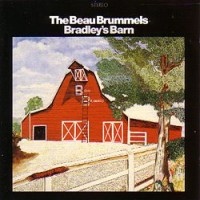
 1. Bradley’s Barn Beau Brummels (1968) This release by undervalued San Francisco folk rockers, which arrived in stores just a few short weeks after Sweetheart of the Rodeo, is in some ways more successful than its competition. Much of this can be attributed to Sal Valentino’s gritty vocals and the impeccable picking of some ace Nashville sessioneers.
1. Bradley’s Barn Beau Brummels (1968) This release by undervalued San Francisco folk rockers, which arrived in stores just a few short weeks after Sweetheart of the Rodeo, is in some ways more successful than its competition. Much of this can be attributed to Sal Valentino’s gritty vocals and the impeccable picking of some ace Nashville sessioneers. 2. Goose Creek Symphony Established 1970 (1970) On their debut album, this Arizona outfit conveys a laid-back and goofy stoner vibe, which somewhat belies its virtuosic musicianship. Its side two opener, “Talk About Goose Creek and Other Important Places”, is one of country rock’s great psychedelic rave-ups.
2. Goose Creek Symphony Established 1970 (1970) On their debut album, this Arizona outfit conveys a laid-back and goofy stoner vibe, which somewhat belies its virtuosic musicianship. Its side two opener, “Talk About Goose Creek and Other Important Places”, is one of country rock’s great psychedelic rave-ups. 3. Grateful Dead American Beauty (1970) Which Grateful Dead album most typifies country rock is open to debate; clearly, it’s a toss-up between Workingman’s Dead and their next album, American Beauty. But in the end the latter achieves this distinction, if only by a slim margin. Featuring Jerry Garcia’s sparkling pedal steel guitar and some of the band’s best ever harmonies, the Dead would never sound this great in the studio again.
3. Grateful Dead American Beauty (1970) Which Grateful Dead album most typifies country rock is open to debate; clearly, it’s a toss-up between Workingman’s Dead and their next album, American Beauty. But in the end the latter achieves this distinction, if only by a slim margin. Featuring Jerry Garcia’s sparkling pedal steel guitar and some of the band’s best ever harmonies, the Dead would never sound this great in the studio again. 4. Commander Cody and His Lost Planet Airmen Lost in the Ozone (1971) Looking back almost as much as it looked forward, this raucous album introduced elements of rockabilly and boogie-woogie into the country rock mix. Commander Cody would record some more great albums, but this remains his definitive statement.
4. Commander Cody and His Lost Planet Airmen Lost in the Ozone (1971) Looking back almost as much as it looked forward, this raucous album introduced elements of rockabilly and boogie-woogie into the country rock mix. Commander Cody would record some more great albums, but this remains his definitive statement. 5. Michael Nesmith And the Hits Just Keep on Comin’ (1972) The Monkees’ hippest member recorded some of the best music in the country rock canon. But this minimalist outing, which features a rendition of “Different Drum” that’s superior to Linda Ronstadt’s version, is a true standout.
5. Michael Nesmith And the Hits Just Keep on Comin’ (1972) The Monkees’ hippest member recorded some of the best music in the country rock canon. But this minimalist outing, which features a rendition of “Different Drum” that’s superior to Linda Ronstadt’s version, is a true standout.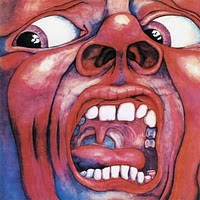 Released in progressive rock’s ground zero year of 1969, King Crimson’s debut instantly upped the ante in terms of expanding the possibilities of where rock music could go, it’s expansive songs and the individual members’ mastery of their instruments defining the genre. One seriously heavy and hyper-intelligent statement, In the Court of the Crimson King explodes with the primal, scalding venom of “21st Century Schizoid Man,” as lyricist Peter Sinfield’s Vietnam-era imagery of “innocents raped by napalm fire” delivered through Greg Lake’s distorted vocals are encircled by a torrent of lacerating Fripp guitar chords, tightly controlled high-octane ensemble passages, and free-jazz discord from Ian McDonald’s layered sax solo. “21st Century Schizoid Man” sets you up for an almost reverse-whiplash effect, as tracks like the exploratory “Moonchild” and lush chamber balladry of “I Talk to the Wind” widen the scope further with their fragility, while the stately “Epitaph” and bombastic title track are carried on the towering waves of a booming, primitive/modern mellotron orchestra, as images of doom and destruction abound. In the Court of the Crimson King would set the template for much of King Crimson’s work, despite the band’s multiple lineup changes, with it’s ability to bludgeon, soothe, and strike a nerve throughout this landmark release resulting in a distinguished rock institution.
Released in progressive rock’s ground zero year of 1969, King Crimson’s debut instantly upped the ante in terms of expanding the possibilities of where rock music could go, it’s expansive songs and the individual members’ mastery of their instruments defining the genre. One seriously heavy and hyper-intelligent statement, In the Court of the Crimson King explodes with the primal, scalding venom of “21st Century Schizoid Man,” as lyricist Peter Sinfield’s Vietnam-era imagery of “innocents raped by napalm fire” delivered through Greg Lake’s distorted vocals are encircled by a torrent of lacerating Fripp guitar chords, tightly controlled high-octane ensemble passages, and free-jazz discord from Ian McDonald’s layered sax solo. “21st Century Schizoid Man” sets you up for an almost reverse-whiplash effect, as tracks like the exploratory “Moonchild” and lush chamber balladry of “I Talk to the Wind” widen the scope further with their fragility, while the stately “Epitaph” and bombastic title track are carried on the towering waves of a booming, primitive/modern mellotron orchestra, as images of doom and destruction abound. In the Court of the Crimson King would set the template for much of King Crimson’s work, despite the band’s multiple lineup changes, with it’s ability to bludgeon, soothe, and strike a nerve throughout this landmark release resulting in a distinguished rock institution. 